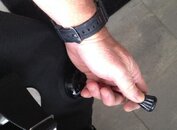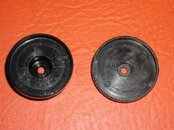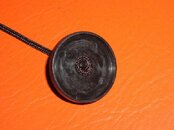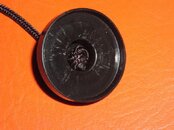cool_hardware52
Contributor
I was on a shallow reef dive last week. I went completely inverted to look under a ledge. Just elevating my wing by that 1 or 2 feet or so caused me to start to rise. Being in fairly shallow water, the ascent accelerated pretty quickly. Attempting to dump air out of the butt dump valve wasn't working to stop my unintended ascent.
Perhaps the specific rotation I went through resulted in most of my air being in the right side of the wing. I don't know. It was warm water, and I was wearing a 3/2 suit, 6 # BP, and 8# of weights, with a 30 pound wing, so there wasn't much air in it, relative to its capacity. Thinking back on it, I think the reef was on my right, so I probably did start horizontal, rotate my right side up, then rotate to feet up/head down. So, it's very possible that most of my wing air was in the right side of the bladder.
Anyway, I ended up having to flip over to a head up position to dump air to stop my ascent. I felt like if I had been diving a donut instead of horseshoe, I could have stopped my ascent without having to flip myself 180 degrees. Or, of course, if I also had a right side dump valve.
16 lbs of total ballast with 3mm suit sounds like a lot to me. 6lbs of plate and harness, 8 lbs of lead and 2 lbs of regulator. Even with a buoyant al80 that's a *lot* of ballast to sink a suit that maybe 3-4 lbs positive. Over weighted leads to more gas in your wing than you need, and that complicates buoyancy control. We routinely see divers using nothing but their SS plate, harness and reg when diving 3mm suits and al 80's
Learning to use the OPV correctly is a skill. To dump *any* gas from the OPV you need to raise the value up to where the gas is in the wing. Pulling *down* on the string instead of pulling *UP* is a sure way to vent nothing. I'd suggest some practice. Try it a little deeper.
The real key to good buoyancy control is planning ahead.
Donut wings are not magic, divers with long experience in BP&W haven't been able to tell the difference between a donut wing and donut wing with a sealed lower arc because gas almost never passes though the lower arc of a donut wing.
It's a well used phrase, but worth understanding; "Don't look for a gear solution to a skills problem"
Good luck,
Tobin
Last edited:








